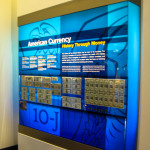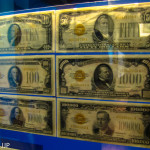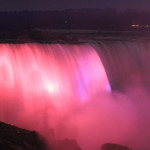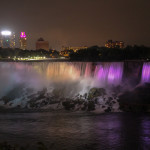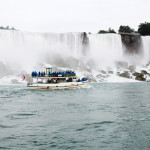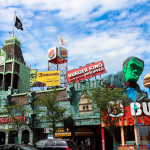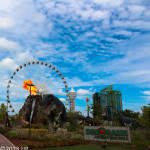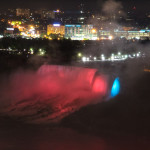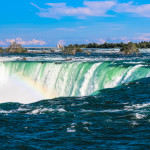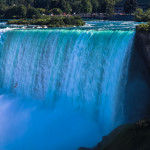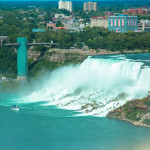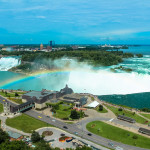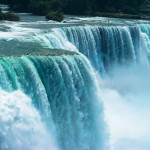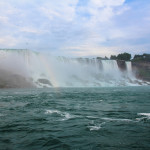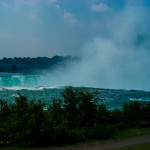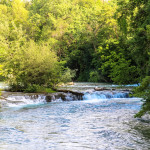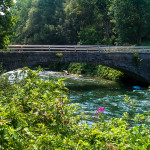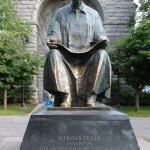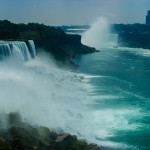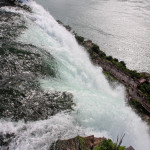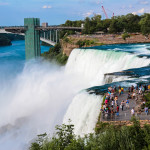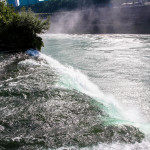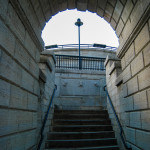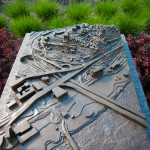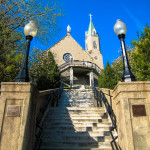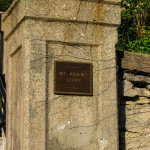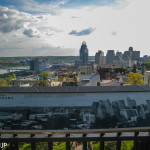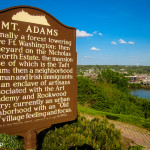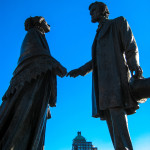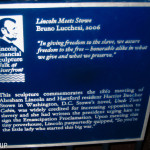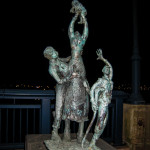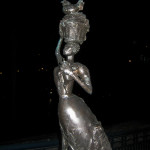Much like the Grand Canyon, Niagara Falls cannot be truly understood until it’s witnessed firsthand. Before seeing the falls and literally feeling their power, I thought I had at least some idea of what the area had in store for me. Pictures, videos, even discussions with others, could not provide one-tenth of the overwhelming grandeur that is Niagara Falls.
Depending on where you are, and the documentation you are carrying (ie. Passport), you may only be able to see one side of the falls. Thus, I’ve broken Niagara Falls into separate U.S. and Canada entries. If you can see both sides, do so, they are completely different experiences.
Purely from a waterfall perspective, Canada has, in my opinion, a more scenic view of the falls. Looking across the Niagara River, the American Falls and Bridal Veil Falls make a perfect backdrop for any picture. You can walk right up to the edge of Horseshoe Falls to get the sensation of exactly how much water (over 600,000 gallons per second in the summer) is rushing over the edge. Below the falls there is a platform to allow you to stand next to the falls and tunnels that will allow you to go behind the curtain of water (for a price), but this is a bit less ‘exciting’ than the American side.
From the Canadian side, you will also experience less nature based and more tourist type attractions. Perched along the cliffs are plenty of carnival type attractions – Guinness Book of World Records, Ripley’s Believe it or Not, Wax museums, mystery houses, golf and games, haunted houses, movies, etc. There is a large Casino for adult fun and games and for some food with a view, the Skylon Tower sits almost 800 feet above the falls.
Both the U.S. and Canadian sides have the famous ‘Maids of the Mist’ boat tours. Although, the Canadian side does not offer the same viewing platform which provides a very nice view of the Horseshoe Falls. If you have time, do it!
From Toronto, it’s about 90 minutes to the Falls (but the good thing is, most of the attractions are open late and the falls are just as spectacular at night!). If you are doing business in Buffalo, you are only 30 minutes away – assuming you have a passport, which is required to cross into Canada.
And depending on the amount of time you have coming into Niagara Falls from Toronto, Hamilton, or Mississauga, you might consider taking the Niagara Parkway. It’s a bit slower than the QEW, but the scenery is well worth the side trip.
SAS Score: 5

